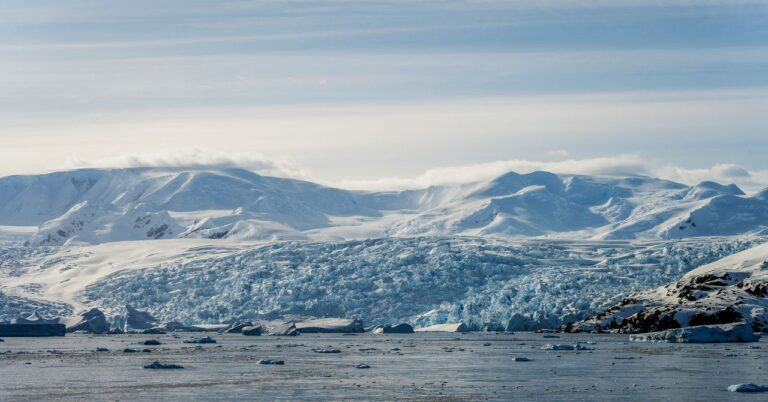
[ad_1]
Ultraviolet light, found in sunshine, then triggers that chemical breakdown in the concentrated pollutants. Without it, the compounds remain relatively inert, like the food in your freezer. But under UV illumination, “by and large, we see faster rates of decay in ice than we do in water,” says Halsall. These accelerated decay rates may play out more noticeably in ice at the poles, where “you can have 24 hours of sunlight at certain portions of the year,” says Grannas. “That drives a lot of chemistry.”
Microplastics, fragments of plastic less than 5 millimeters long, also break down faster in ice than in water. Chemists at Central South University in China found that over 48 days, microplastic beads less than a thousandth of a millimeter in diameter deteriorated in ice to the extent they would over 33 years in the Yangtze River. “Microplastics take hundreds of years, if not thousands, to break down,” Chen Tian of Central South University in China told WIRED, in Chinese. “We didn’t have that long, so we studied just the first step of degradation. But we think that the entire degradation process should be faster in ice.”
Plastic waste is the most common form of marine debris—around 10 million tons of plastic ends up in the ocean every year, much of which breaks down into microplastics—so ice at the poles may be churning through the stuff. This might be good news, as it could help scientists figure out methods to break microplastics down faster, Tian and her colleagues point out in their paper. But by breaking microplastic down into ever smaller pieces, ice may also be making it an ever more pervasive pollutant. The smaller plastic fragments get, the deeper into organisms they penetrate. Microscopic plastic particles have been found in the brains of fish, causing brain damage.
For Halsall, whose research aims to track human activity in Antarctic ice, the degradation of pollutants makes life more difficult. He’s particularly interested in perfluoroalkyl and polyfluoroalkyl substances, or PFAS. These “forever chemicals” persist in the environment and are found in nonstick pans, engine oils, and all sorts of consumer products. In 2017, Halsall’s collaborators cut into the Antarctic to extract a 10-meter-long cylinder of packed snow that had accumulated since 1958. Specimens like this reveal climate and human activity, much as tree rings do in more temperate latitudes. The deeper the snow sample, the further back in time you go.
Many chemical companies pivoted away from using “longer-chain” PFAS around the year 2000. In the snow deposited that year and after, Halsall’s team found less of that pollutant and more of its replacement compounds, “shorter-chain” PFAS. “We can spot in that snow core when industry changed,” says Halsall. But to accurately understand what was being used when, Halsall also needs to consider how much pollutants have degraded, as this may help explain differences in the chemicals found at various depths.
These ice-borne reactions have impacts for the rest of us too. As glaciers at the poles melt, the sunlight-processed pollutants are released into the environment. “You might think, ‘We’re degrading a pollutant. That’s a good thing,’” says Grannas. “In some cases it is. But we’ve found, for some pollutants, the products they turn into can actually be more toxic than the original.” For example, Grannas and her colleagues found that the chemical aldrin, historically used in pesticides, could transform more readily into the even more toxic chemical dieldrin in ice. (Farmers also widely used dieldrin in pesticides in the 20th century, and the use of both chemicals is banned in most countries.)
On a more optimistic note, Grannas says that studying how ice degrades pollutants will help researchers evaluate new substances. “We’re introducing new chemicals into our agricultural systems, pharmaceutical products, and daily use—laundry detergents and fragrances and personal products,” says Grannas. “We want to understand up front what will happen if we use this on a massive scale and emit it into the environment.” Some of those pollutants will end up frozen in glaciers or at the poles, and tracking the evolution of chemicals in ice gives researchers a more accurate sense of their potential environmental impact. At Earth’s poles, the inside of an ice cube is a tumultuous place.
[ad_2]